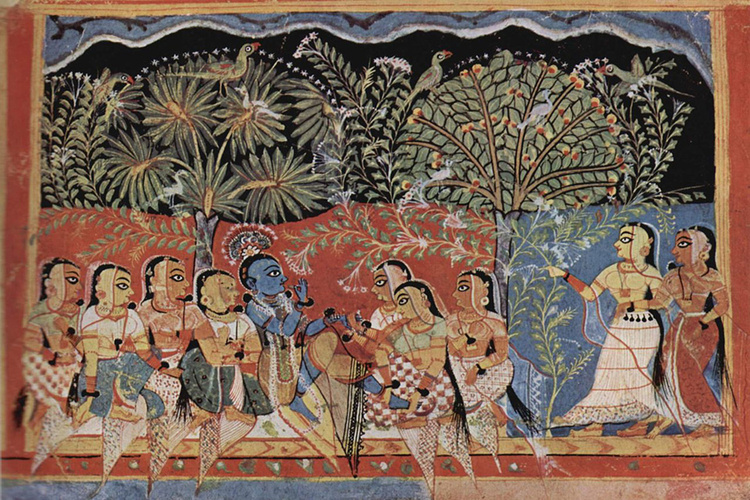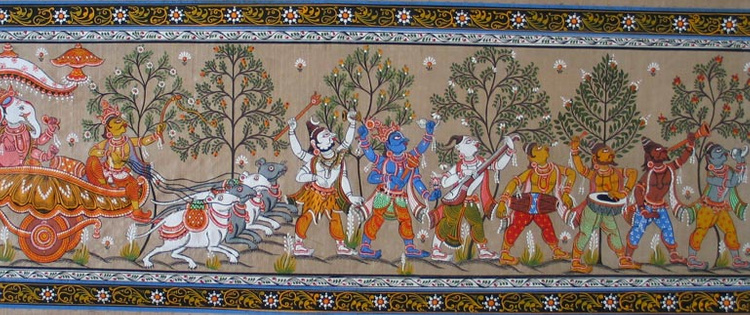What is 'Vedic'? Pt. 6: Gods and Goddesses
- Jean Michel

- May 13, 2022
- 4 min read
The Vedic cosmology is famously described as having 33 million individual gods, all with varying levels of power. Besides being a gross exaggeration (there is no ‘list’ of the 33 million) the Srimad-Bhagavatam makes it clear that all of the gods and goddesses are animated by the First Cause of Creation — the Supreme Source. This is the same Source that the monotheistic religions call ‘God’.
While there are many sects within the pantheon of the Vedic culture and each with their own unique beliefs - similar to how Christianity has Baptists, Jesuits, Catholics, etc - the Vaishnavic cosmology outlined in the Srimad-Bhagavatam is not blasphemous of Western Christian monotheism, but rather it expands upon it with a ‘multi-level monotheism’.
The dialectic between monotheism and polytheism - one God vs. many gods - has long unnecessarily divided the Western and Eastern religious traditions. However, the Vedic cosmology is both polytheistic and monotheistic, because it describes One Supreme Source that gives and sustains life to all types of divinity/consciousness, animate and inanimate, without exception.
If a dolphin, shark, whale, algae, salmon, and star fish all represent the varying states of consciousness/awareness possible in the material world, then God is water.
With regard to Vedic devotees worshiping multiple deities, each deity can provide a specific type of aide to the devotee. For example, one could venerate a powerful divine being, such as Shiva, who governs the principles of destruction, death, piety, spirituality, et al. By chanting certain mantras and conducting severe austerities to Shiva’s countenance with intention, one will receive the requested benedictions from him.

But Shiva receives his power and authority from the One Source, which animates and sustains Shiva’s powers. Shiva himself worships the One Supreme, embodied as Krishna and who also takes many other forms. Thus by devoting oneself to the undivided One Supreme, one is able to bypass all the other gods and goddesses. For a business metaphor it can be likened to skipping over a middle-man and going directly to the source.
A Catholic analogy: many humans have achieved high levels of material purity to the point they were able to perform miracles. These ‘saints’ are not called ‘gods’, but because they submitted to the one true God so absolutely — who appeared as the human avatar Jesus — they were able to affect physical reality with ‘powers’ unobtained by other humans (confirmed miracles are a prerequisite for someone to be canonized as a saint).
It is the same with the Vedic gods: although each has their own duties and dominions within Creation, they are all subject to the will of the One Supreme. The divine Vedic beings achieved more advanced powers than the Christian saints because they lived during different yugas, which by definition held different potentialities for success.
If you keep an icon of the Catholic Saint Christopher, the patron saint of traveling, it doesn’t mean you are polytheistic, only that you are venerating him and asking for protection while traveling, the domain he is tasked by God to protect.
And just as one can achieve the status of a powerful ‘god’ or ‘saint’ by following righteous principles, one can choose to worship vice-based deities (asuras) who will award a human with controlling and ‘demonic’ powers.
Prophecies of the Future
The Srimad-Bhagavatam individually documents God’s 22 avatars that came before Krishna, and goes on to predict an avatar after Krishna “just for the purpose of deluding those who are envious of the faithful theist”. This description closely resembles Jesus, whose central narrative revolves around deluding the highest members of his socio-historical priest class, the envious Jewish Pharisees, who attempt to defy him by sentencing him to death, which Jesus ultimately conquers.
The Srimad-Bhagavatam also predicts a final avatar that will appear at the end of this Kali-yuga, named Kalki.
In SB 1.3.25 and SB 12.2.19-20, the Srimad-Bhagavatam tells us that “at the end of the Kali-yuga almost all the rulers of the earth will have degenerated into plunderers” and Kalki will ride on a white horse and destroy the entire demonic presence on Earth - “those thieves who have dared to dress as kings.” And after Kalki destroys all the irreligious demons on earth he will install a new Satya-yuga Golden Age.
Sound familiar? This prophecy from the Srimad-Bhagavatam echos the Book of Revelation’s Second Coming (Rev. 19:11-12 and Rev. 21:1), when the warrior-Messiah with “a name ... that no one knew except Himself” rides on a white horse from heaven and defeats the army of the Antichrist (”the beast”), and ushers in a “new earth”.

So upon close study one will discover that the teachings of Jesus are consistent with living in the ‘state of goodness’ as prescribed by the Srimad-Bhagavatam, and perhaps He incarnated during the Kali-yuga so to preserve for us the essential teachings for living a successful human life.
The Western reader will be pleasantly surprised with the continuity that ancient Vedic system has with the Western Christian spiritual traditions. At their core the Srimad-Bhagavatam and the teachings of Jesus share the same fundamental idea: “the Supreme Personality of Godhead ... lives in everyones heart” (SB 8.16.29) and “the kingdom of heaven is within you” (Luke 17:21).
Further reading:














Comments